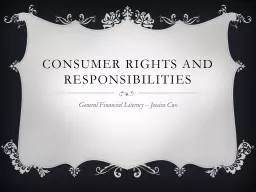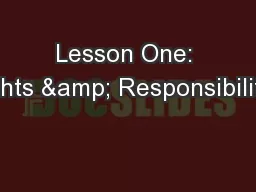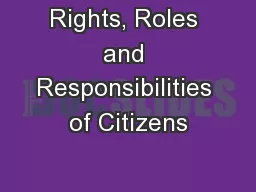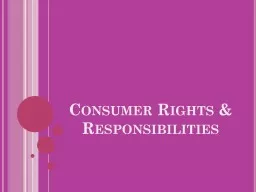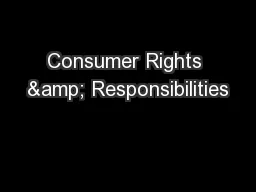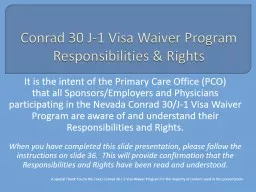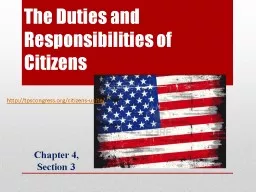PPT-Consumer rights and responsibilities
Author : beatever | Published Date : 2020-06-19
General Financial Literacy Jessica Cox Learning objective Explain the purposes and features of consumer protection laws Identify federal and state entities that
Presentation Embed Code
Download Presentation
Download Presentation The PPT/PDF document "Consumer rights and responsibilities" is the property of its rightful owner. Permission is granted to download and print the materials on this website for personal, non-commercial use only, and to display it on your personal computer provided you do not modify the materials and that you retain all copyright notices contained in the materials. By downloading content from our website, you accept the terms of this agreement.
Consumer rights and responsibilities: Transcript
Download Rules Of Document
"Consumer rights and responsibilities"The content belongs to its owner. You may download and print it for personal use, without modification, and keep all copyright notices. By downloading, you agree to these terms.
Related Documents

